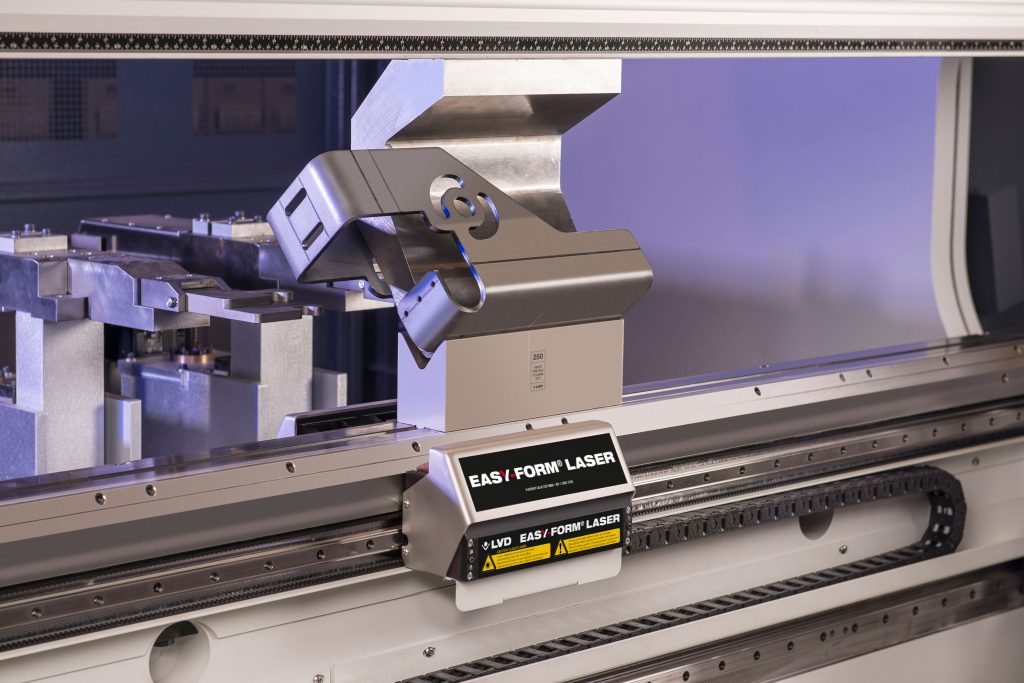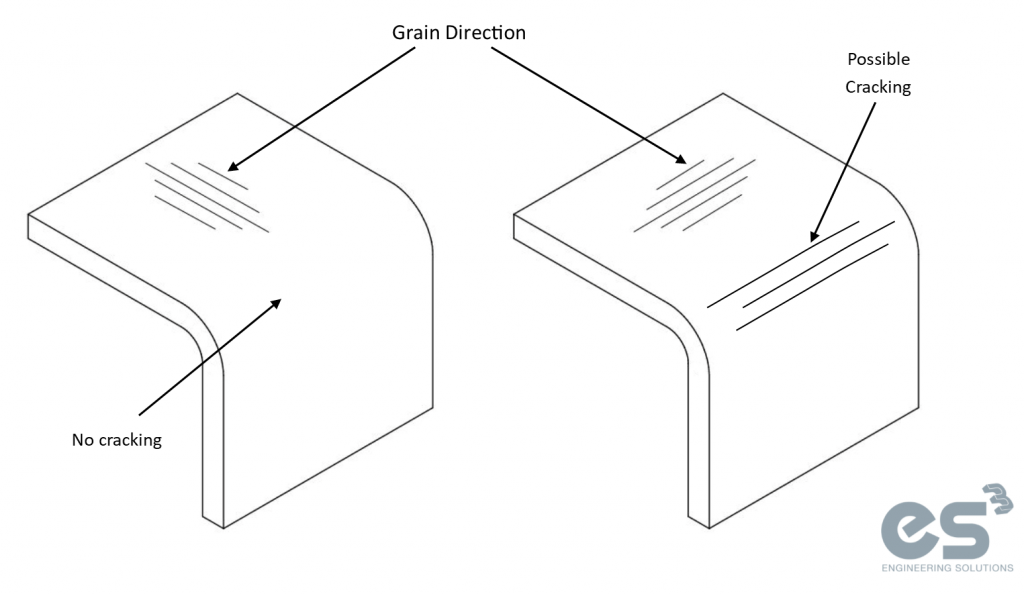The Importance of Grain Direction in Folding
Posted onAs a sheet metal fabricator, we understand the importance of smart material utilisation. It plays a huge part in offering our clients the most competitive solution. While we strive to optimise this as much as possible, we also need to be aware of how grain direction can influence the quality and consistency in the folding process.

Where does grain direction come from?
Grain direction is a term used to describe the rolling direction of metal after being manufactured into sheet, plate, or coil. This manufacturing method is where hot metal is compressed through rollers and forced into shape, elongating the crystals in the process.
Before processing, the crystals vary in both size and orientation, but then form in the direction of rolling, becoming the grains we see running the length of the sheet.
How does this affect folding?
Any experienced press operator will have come across it before – you’ve just got the press dialed in to bend a part accurately, but a few parts later the angles are coming out inconsistent, sometimes even a few degrees out! This is usually a sign of the parts having been laser cut from a sheet with random grain directions. The grain direction affects the spring-back of the material and hence the resulting angles after pressing. In some situations the material can even crack if the bend line is parallel to the grain (this is particularly problematic with some grades of aluminium).

When folding, steel is strongest when bent against the grain. Bending sheet metal with the grain (longitudinally) increases the possibility of the grains separating at the grain boundaries. This limits how tight of an inside bent radius you can achieve without cracking the outside of the bend [see above image]. Bending like this (with the grain) can be less consistent, however less pressure is required to make a bend.
In summary, variations and cracking when bending longitudinally can be influenced by both the material and the application. Therefore, when it comes to grain direction in parts being bent, the most important element is consistency in direction.
Grain Direction Is Important
Optimising material utilisation in nest layouts is vital when parts are remaining flat. If batches of parts are being bent with some against, some with and others diagonal to the grain direction of the steel, each angle and dimension may vary across the entire batch. To amend this, we must cut parts in a uniform way, with grain direction marked on the parts. As a result, the quality and consistency of bending will be increased, therefore yielding better results and more accurate parts.
